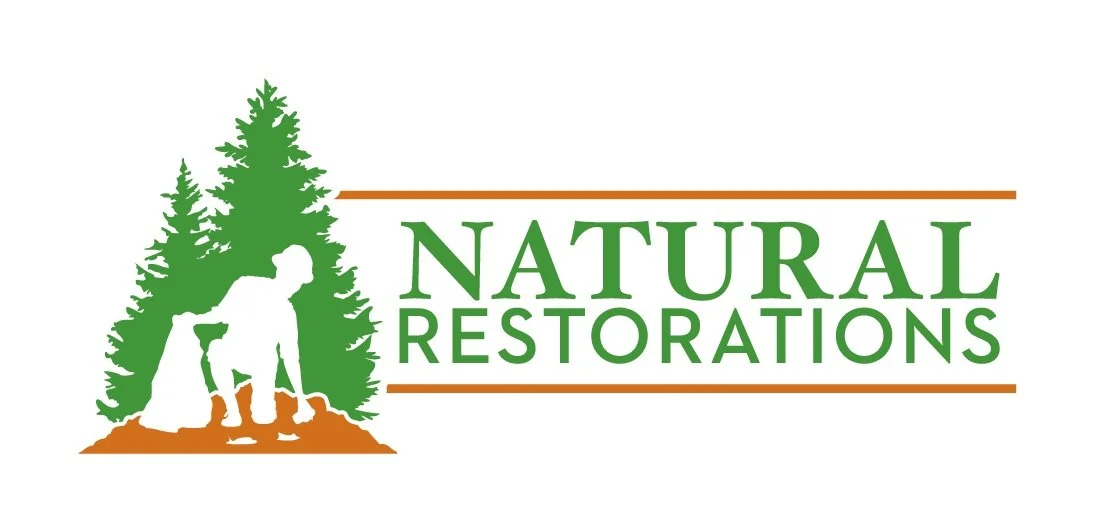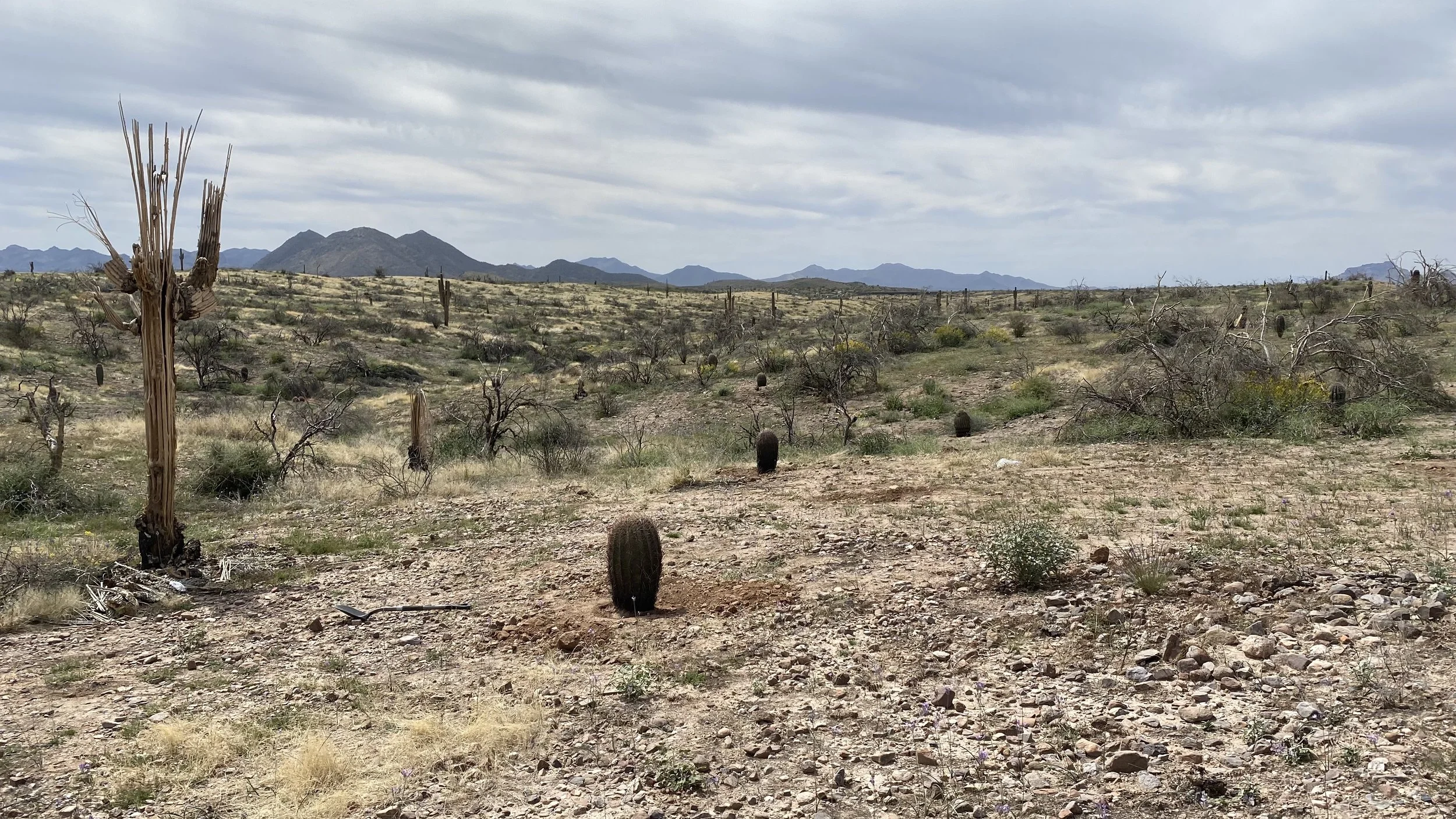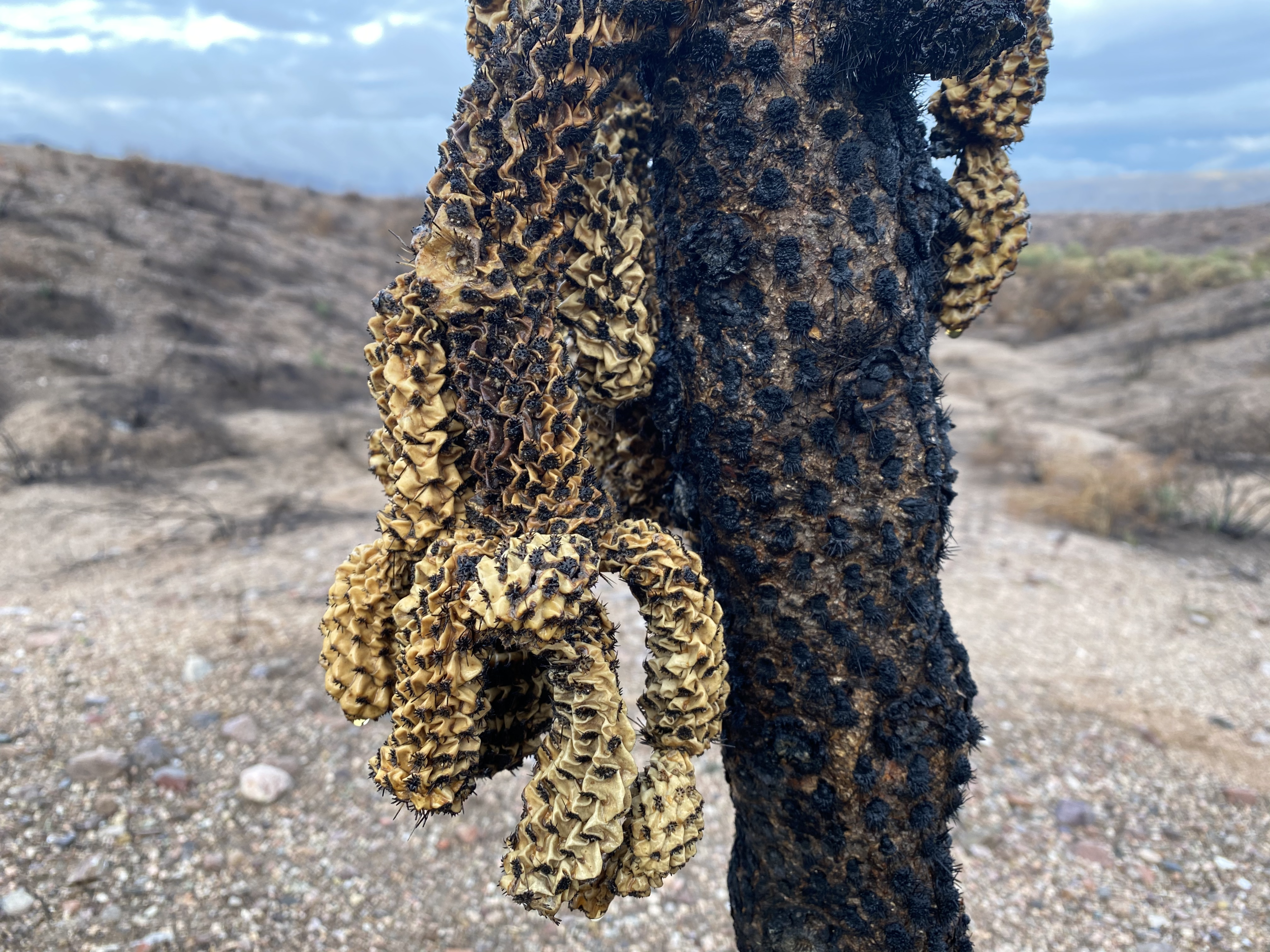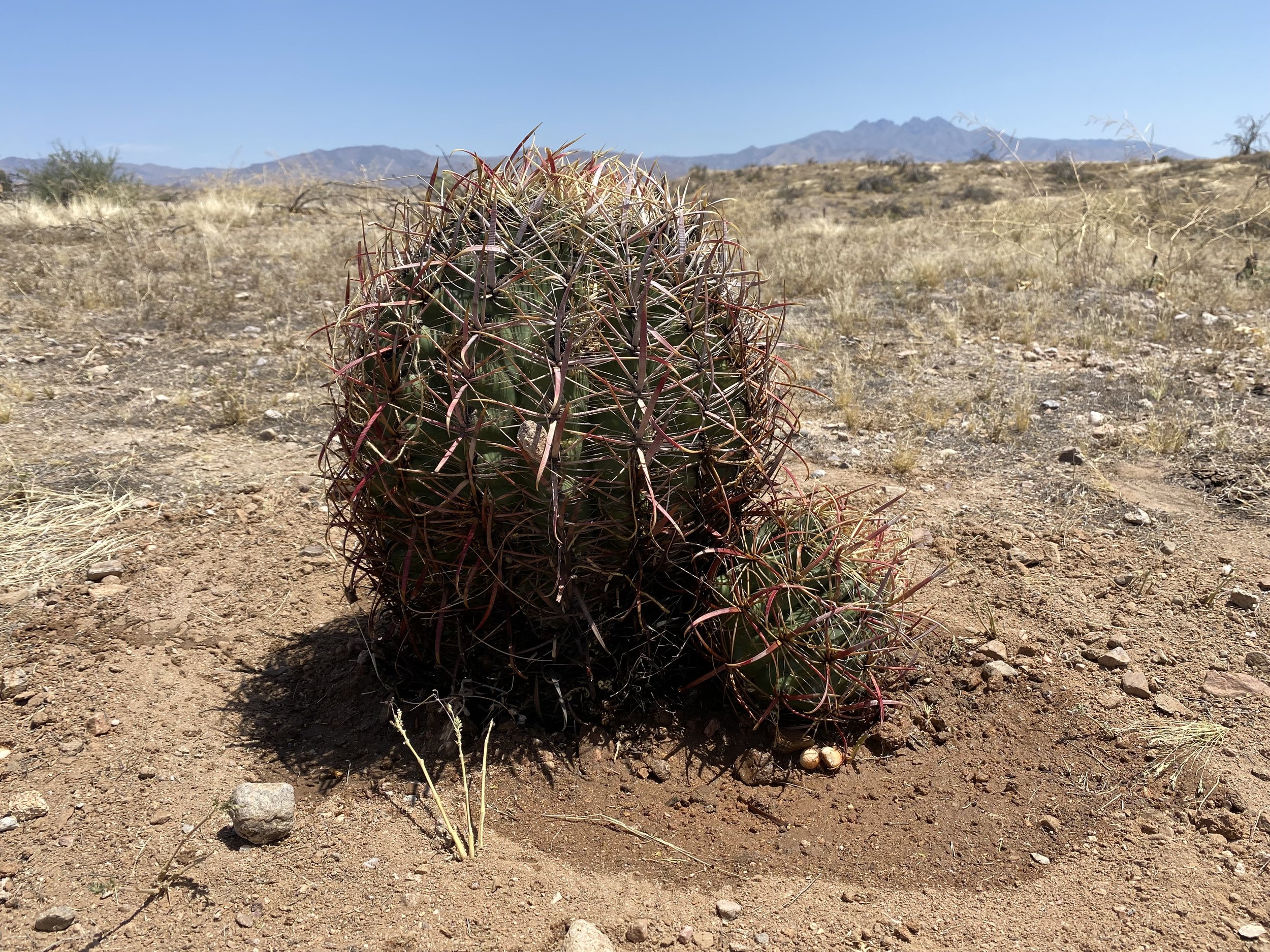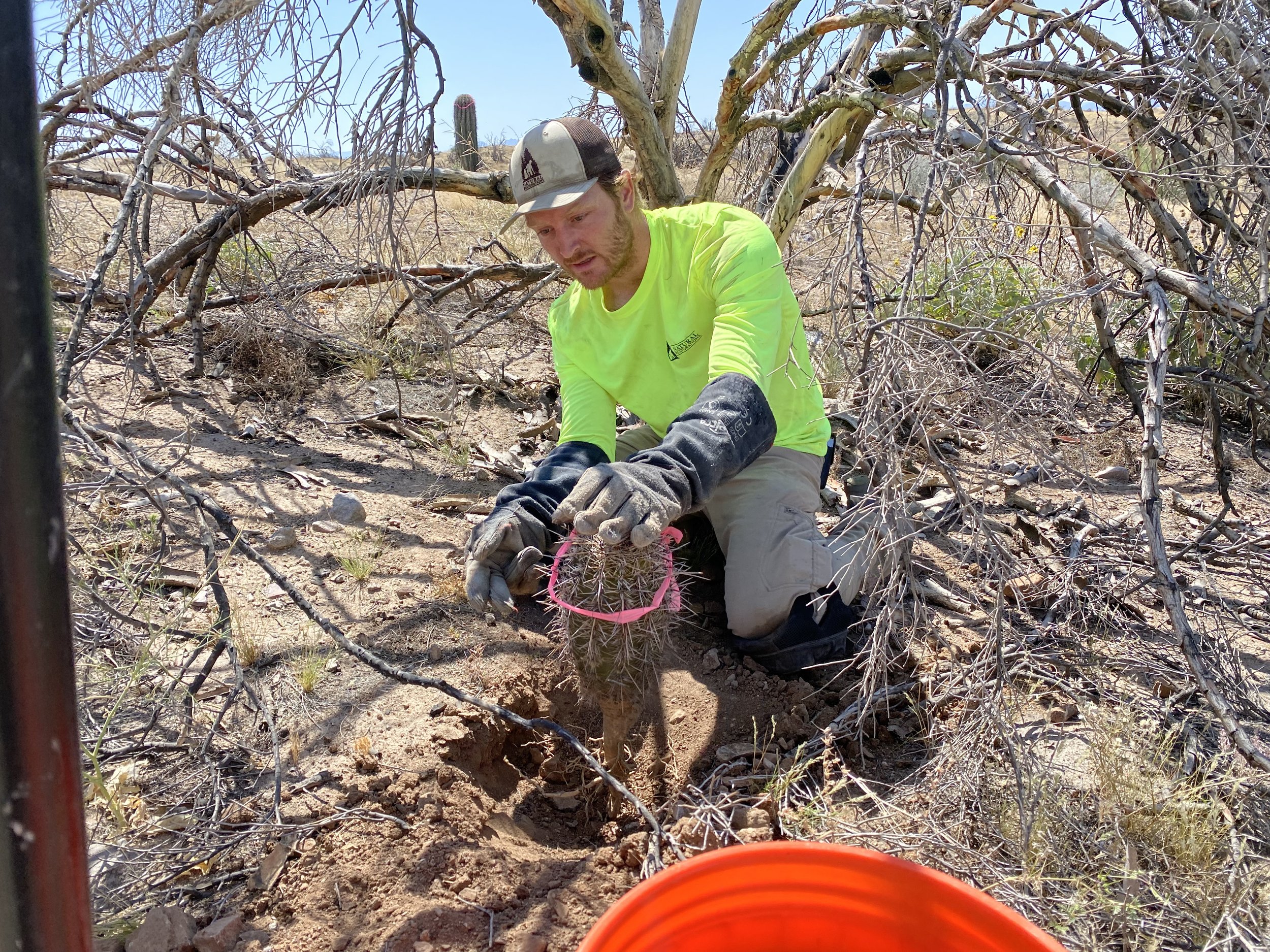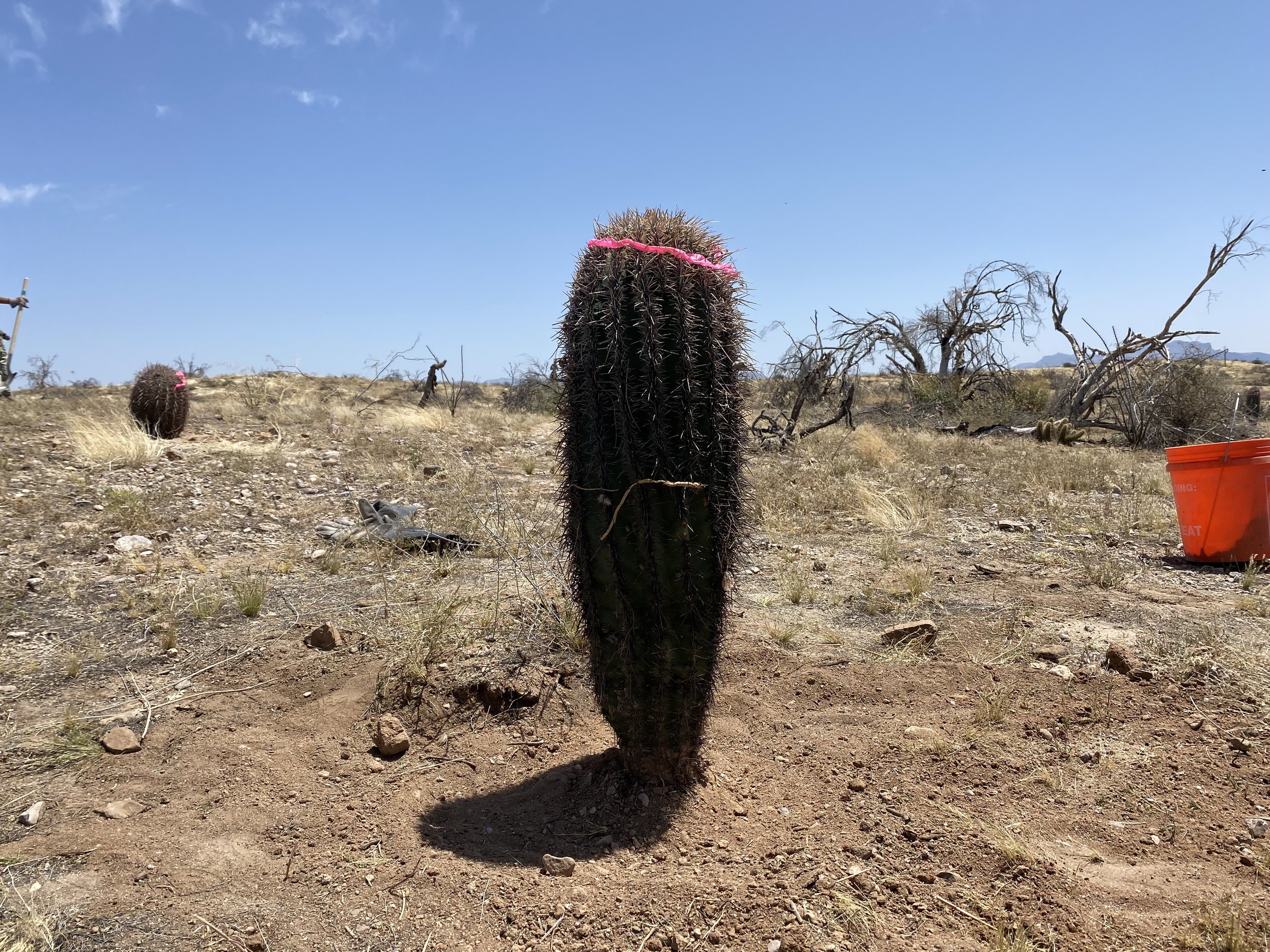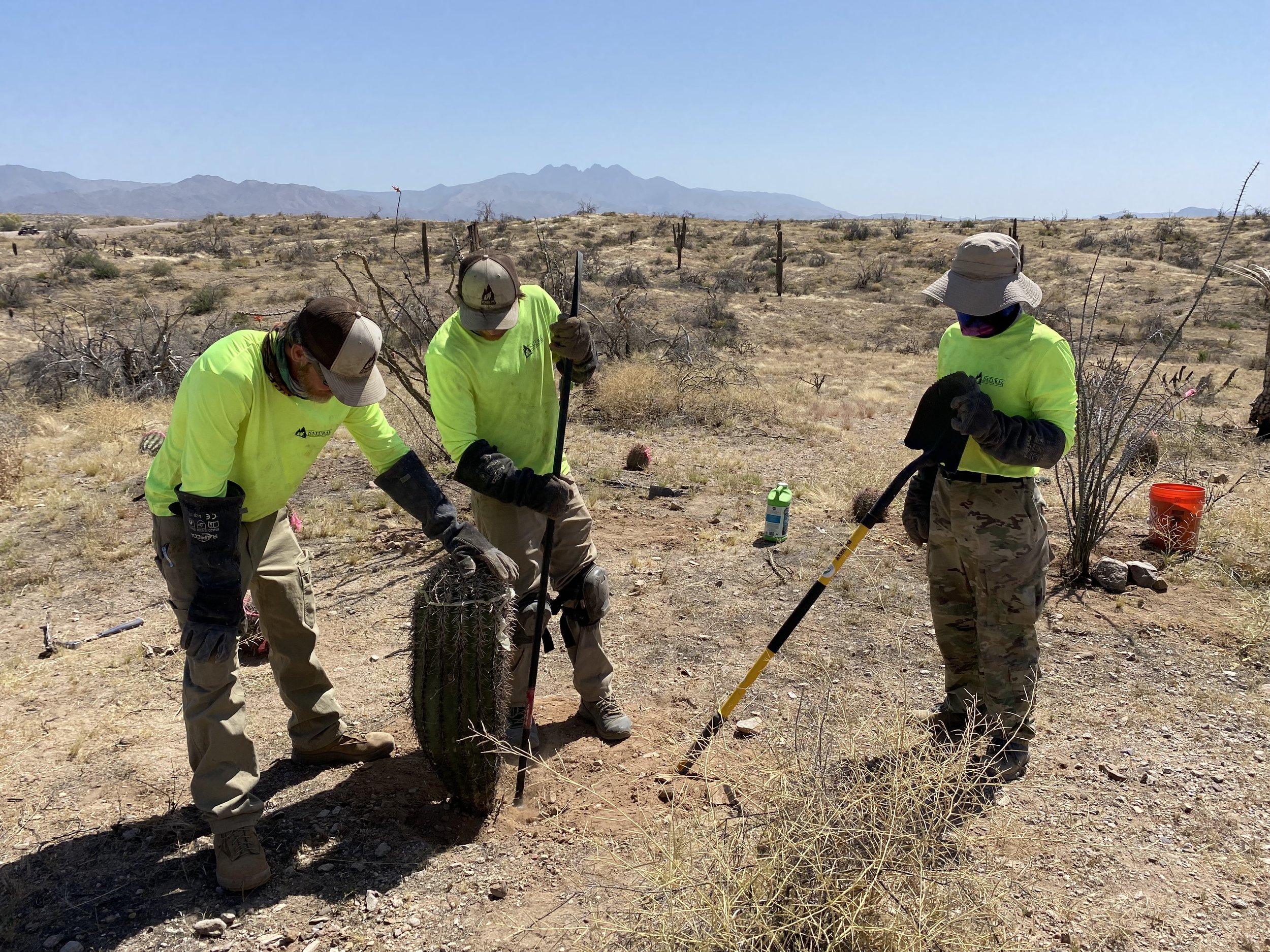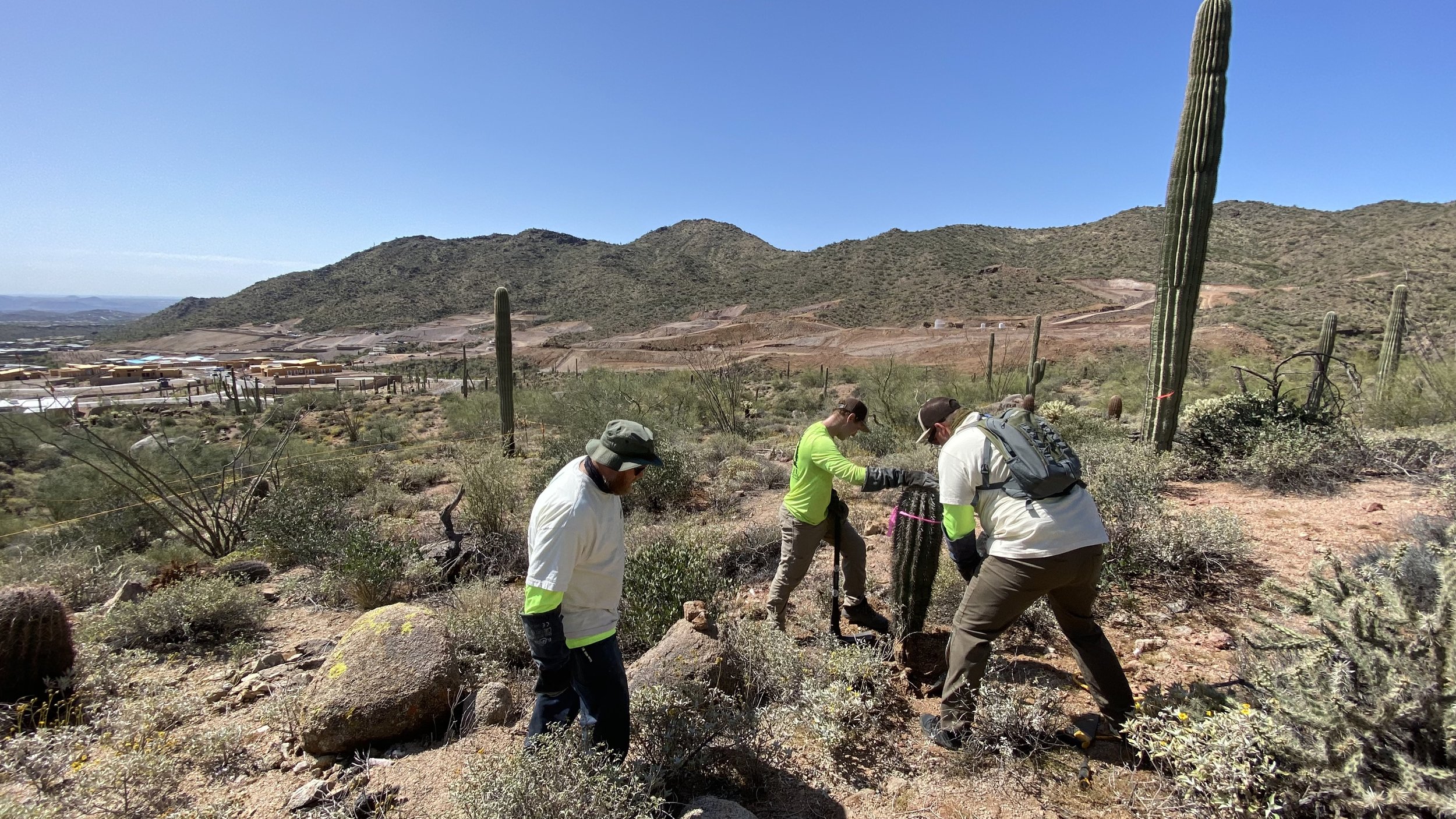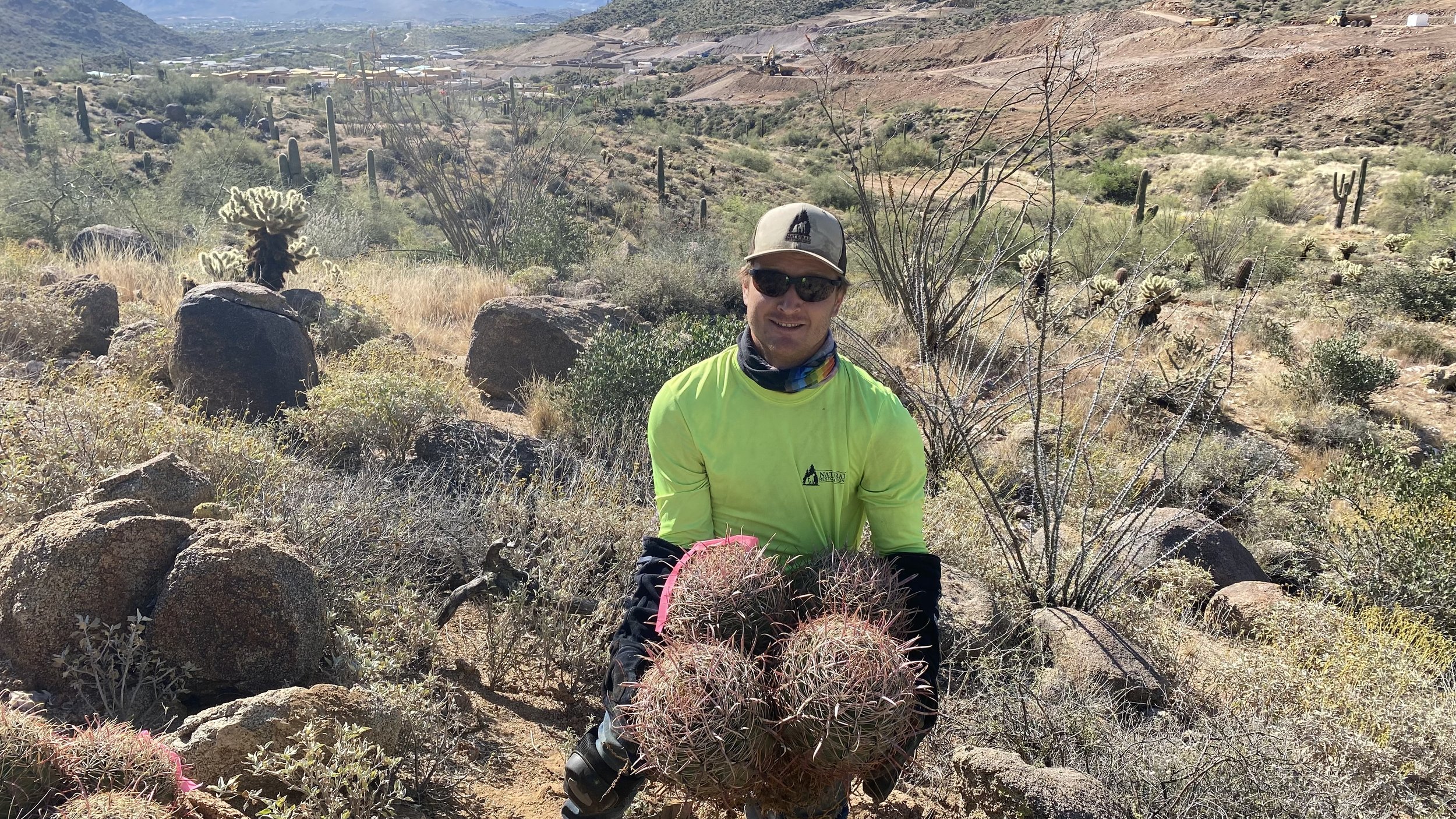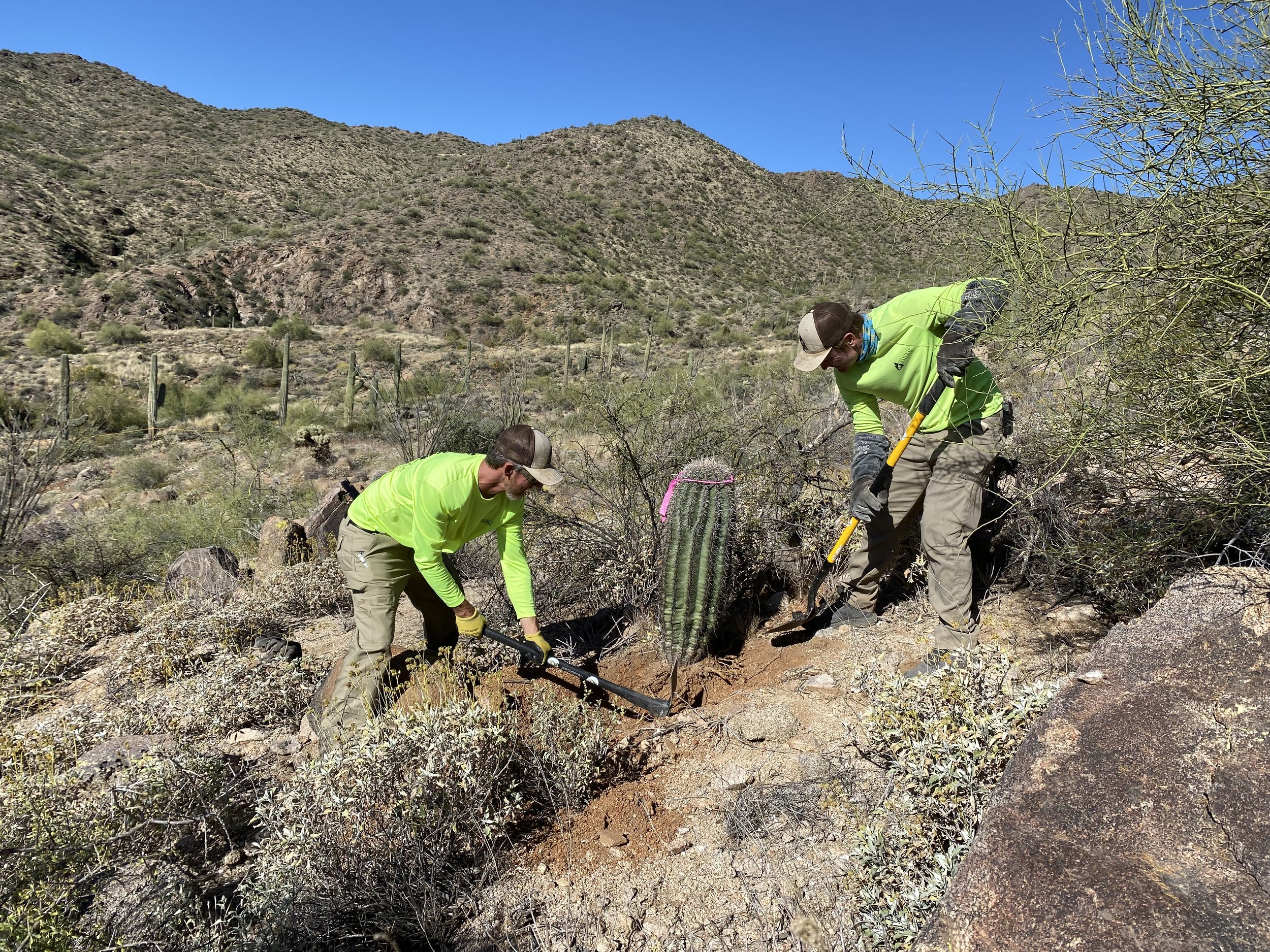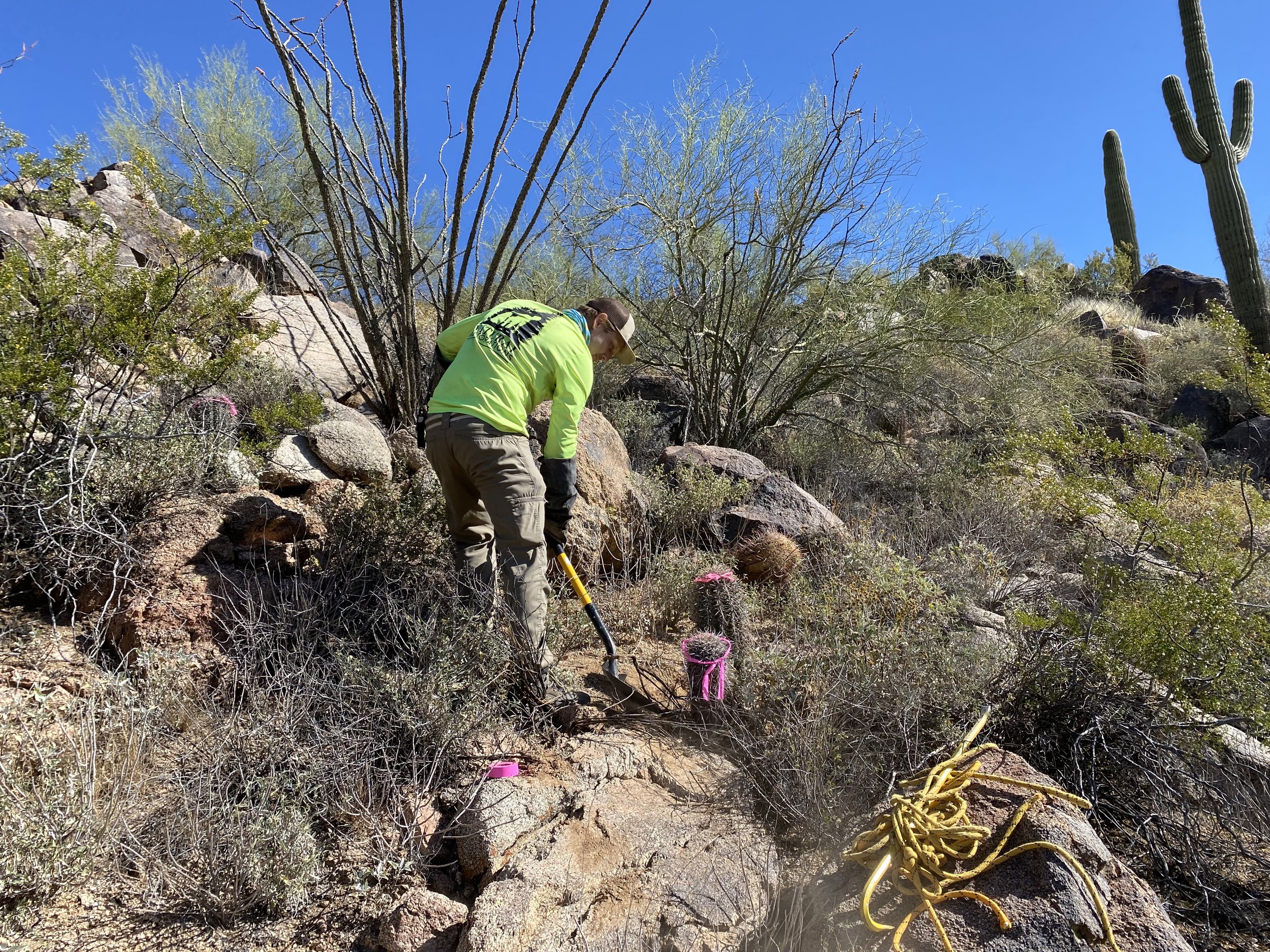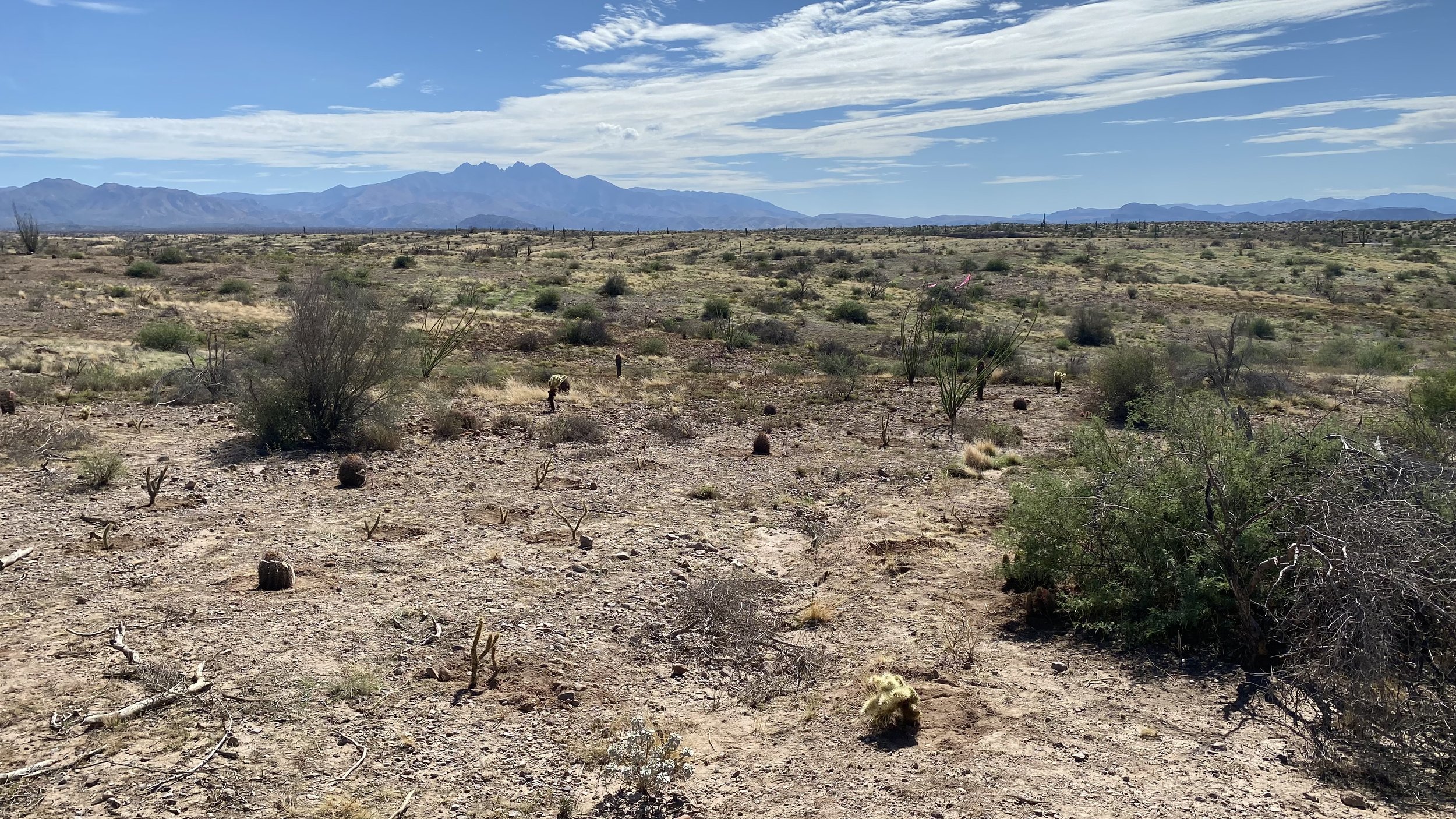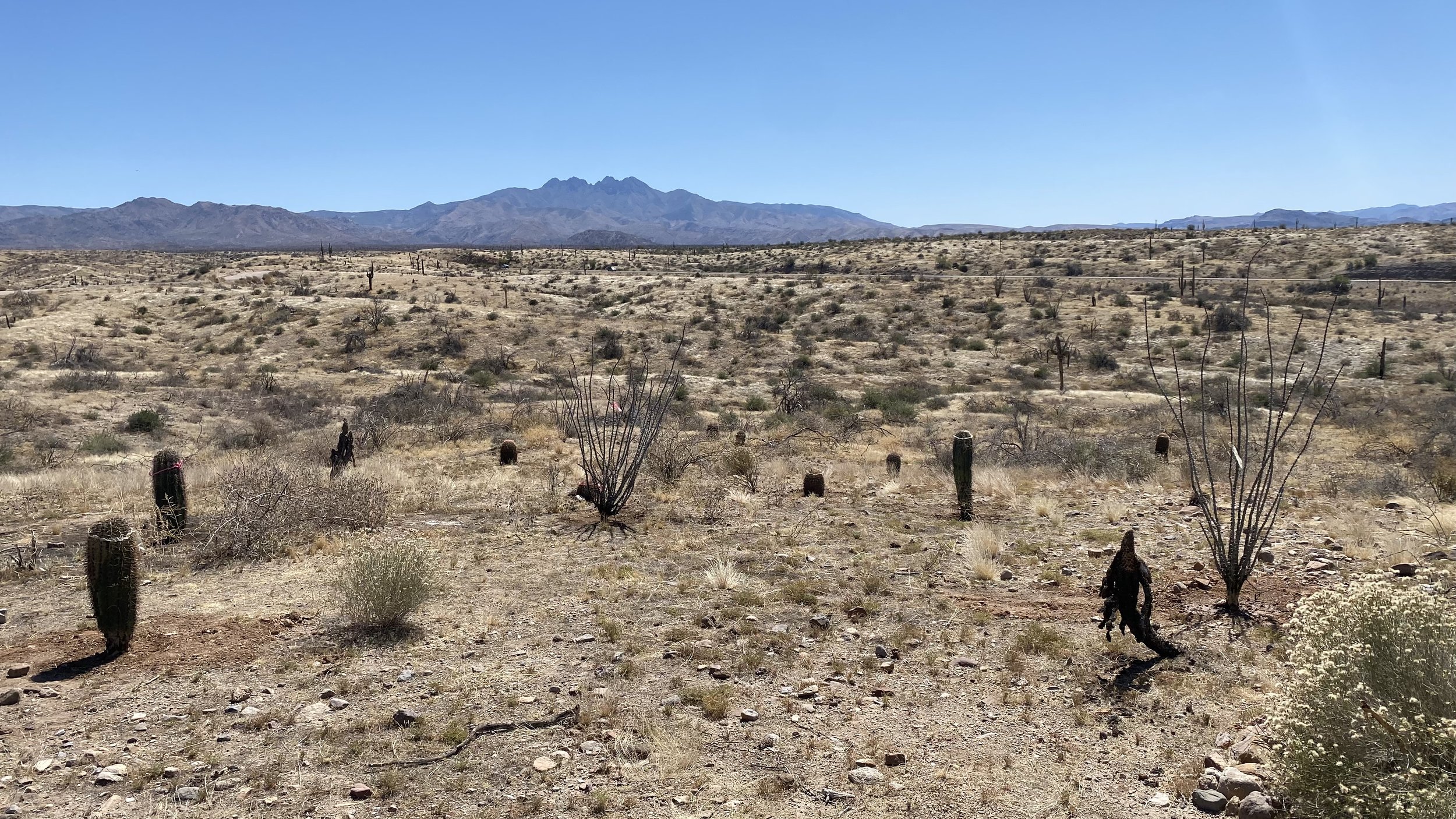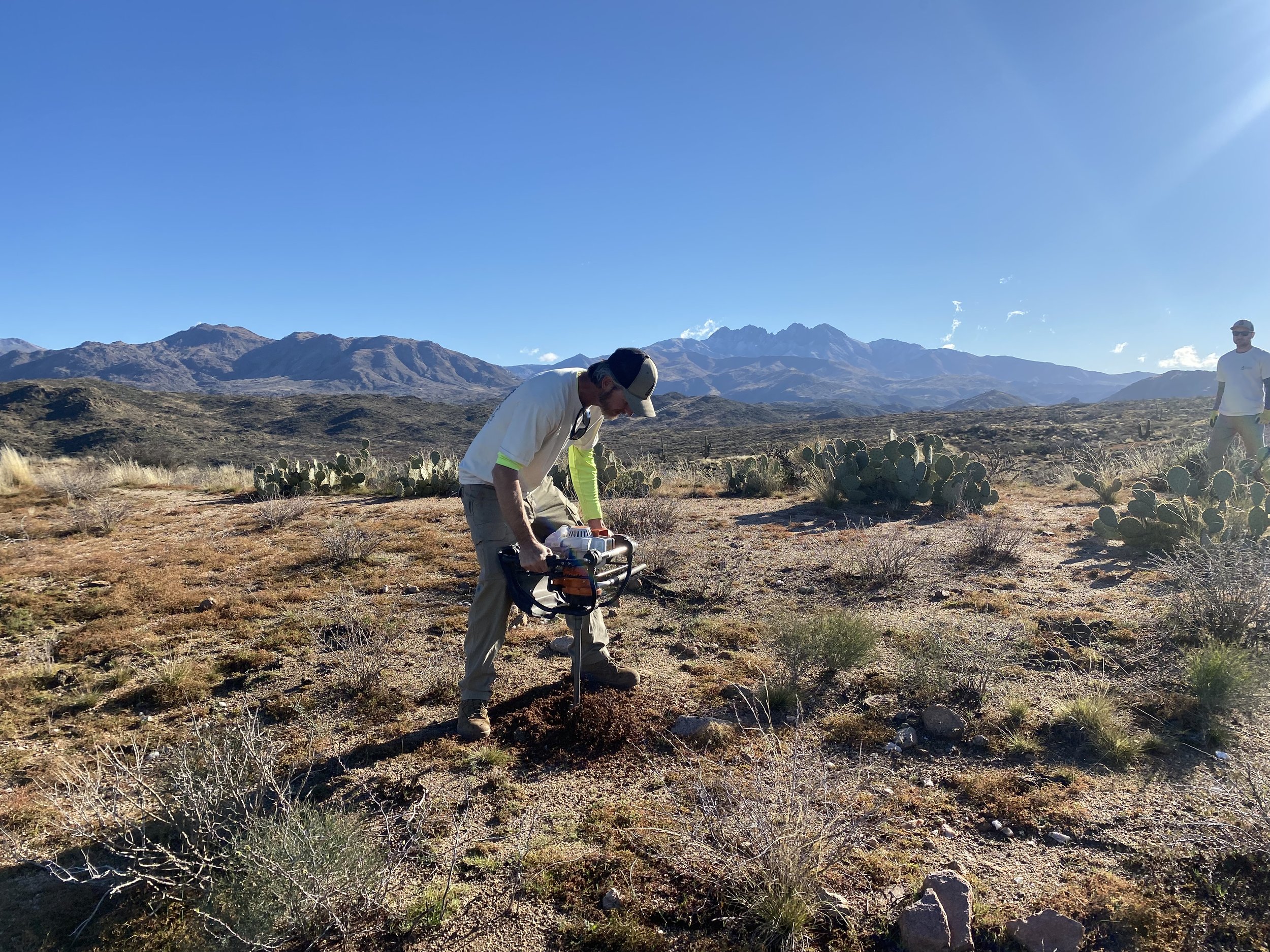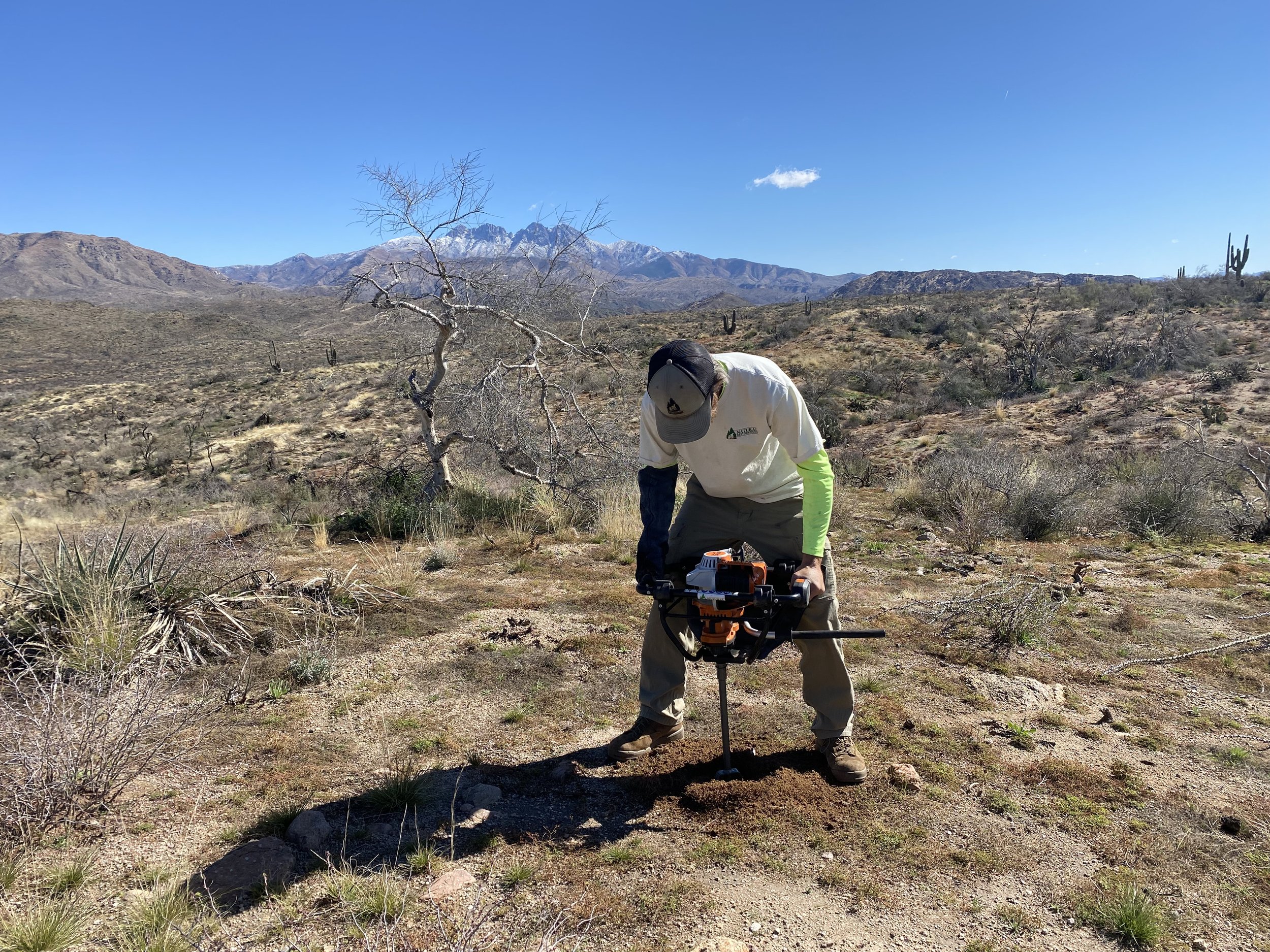This Project was made possible through funding from the Arizona Community Foundation through the Helen Dyar King Fund & REI Co-op
the 2020 Bush Fire
On June 13th, 2020 an individual driving south on SR87 from Payson to Phoenix, noticed their car was overheating and smoke was coming out from underneath. They pulled off the highway to safely inspect the vehicle, but they pulled onto dry grass and the heat from the brakes sparked the 5th largest wildfire in Arizona history.
Years of extreme drought and increased fuel loads (largely made up of non-native, invasive weeds and shrubs) carried the flames through 193,455 acres of the Tonto National Forest. It devastated multiple ecosystems at Lower Sycamore and in the Four Peaks Wilderness Area as the fire burned over the top of Four Peaks and back down towards Roosevelt Lake. Unfortunately, most of the fire occurred in the Sonoran Desert, an ecosystem that has not evolved or adapted to wildfires. With the impact to over 80,000 iconic saguaros, Natural Restorations is dedicated to the long-term efforts to restore and revegetate the Bush Fire burn scar.
1,742 Cacti collected & saved from destruction
1,742 cacti replanted in the 2020 bush fire burn scar
saguaro, ocotillo, hedgehog, barrel, prickly pear, teddy bear & staghorn cholla
This project was a combined effort in partnership with grants from the Arizona Community Foundation through the Helen Dyar King Fund and REI Co-op. Through these two grants, our Dedicated Restoration Team salvaged 1,742 cacti and replanted them in the 2020 Bush Fire burn scar at Lower Sycamore.
This project provided 872 hours of work to Military Veterans on our team. Veterans working with us benefited from our program not only through paid contract work but also through spending time in nature with other veterans. It is extremely rewarding to accomplish these restoration projects, bringing life back to a fire scar area and making a lasting impact on the state.
Replanting this burn scar not only improves the appearance of the area, it also improves the usability and safety of the area for the outdoor community. Bringing native plant communities back to these watersheds helps soil stabilization and reduces the effects of erosion caused by water and wind. Wildlife also benefit from the replanting of their native habitat, providing a healthy ecosystem.
Thank you to the Arizona Community Foundation & the Helen Dyar King Fund and REI for helping us make lasting impacts on Arizona’s natural spaces and the veterans on our team.
Do not take cacti, trees, or plants from construction sites, private land or public land. We go through a lengthy process to ensure we are legally allowed to collect, transport, and replant.
This grant project consisted of many parts: salvaging, transporting, replanting, and monitoring.
Salvaging: We work with home builders, construction companies, and private land owners to salvage cacti for the burn scar. Our Dedicated Restoration Team salvages saguaros, barrels, hedgehog, ocotillo, prickly pear, & 3 types of cholla with hand tools and transports them from construction sites and private land sites to the burn scar for replanting. We salvaged 1,742 cacti for this project.
TRANSPORTING: Once loaded in our trailer and truck bed, we transport cacti to our cacti nursery on the Tonto National Forest for a safe place to store them before replanting.
REPLANTING: Our team transports cacti from our nursery to the Bush Fire burn scar. We unload them, walk them through the burn scar & place them in areas where they will have the best chance of survival. We dig holes, replant them with our markers facing south, and water them. We replanted 1,742 cacti!
MONITORING & WATERING: We continue to monitor our replanting areas & water the cacti we plant as needed depending on weather conditions.
THANK YOU: Thank you to the home builders, construction companies, & private land owners we worked with for everything they did to help make this project possible! We are grateful for the opportunity to legally collect, transport, and replant cacti in the burn scar. Thank you to everyone from the Tonto National Forest - Mesa Ranger District for all of their help and support of this project!
If you or your organization is interested in sponsoring our Dedicated Restoration Team and helping fund team projects, please contact us.
BEFORE
AFTER
BEFORE
AFTER
BEFORE
AFTER
BEFORE
AFTER
BEFORE
AFTER
BEFORE
AFTER
BEFORE
AFTER
BEFORE
AFTER
BEFORE
AFTER
BEFORE
AFTER
BEFORE
AFTER
BEFORE
AFTER
BEFORE
AFTER
Watering cacti in the desert
Watering cacti is not only valuable in providing initial water to reduce transplant shock, it also aids in compacting the soil around the freshly planted root network. We continue to monitor the area and water as needed if we do not get sufficient rain.
Collecting
Where do the cacti come from?
The cacti for this replanting project are provided when we work with construction companies, home builders, and private land owners that let our Dedicated Restoration Team salvage cacti with hand tools.
